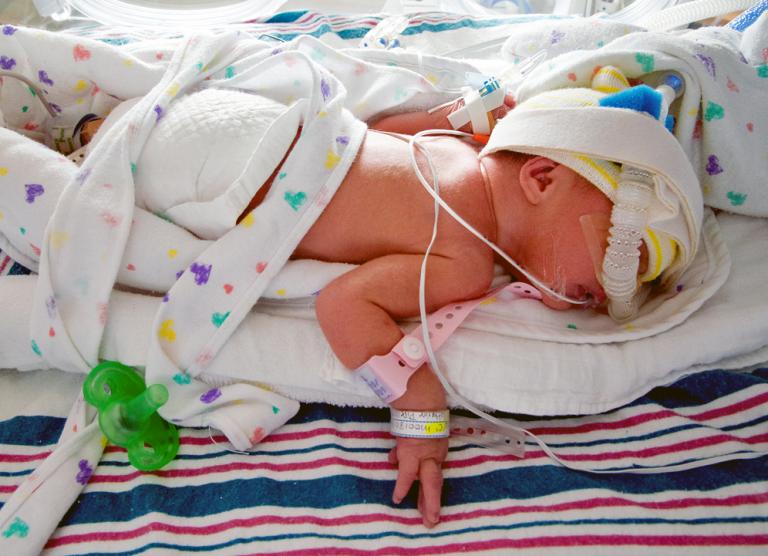
The three-word version, “eh, probably not.”
And for more words than that, it becomes more necessary to dig into the data that underlies a claim reported in CNN earlier this month, that, as the headline says, “A rise in premature births among Latina women may be linked to Trump’s election, study says.”
The claim goes like this:
The United States 2016 election, when President Donald Trump was voted into office, may have been tied to a rise in premature births among Latina women across the US, according to a new study.
In the nine months beginning with November 2016, about 3.2% to 3.6% more preterm births to Latina women occurred above the levels of preterm births that would have been expected had the election not occurred, suggests the study, published in the medical journal JAMA Network Open on Friday.
The study itself, “Association of Preterm Births Among US Latina Women With the 2016 Presidential Election” by Alison Gemmill, Ralph Catalano, Joan A. Casey, et al., is available online and is based on publicly accessible data at the CDC WONDER database.
This boost in prematurity is attributed to stress experienced by women in the country illegally as well as stresses felt by Hispanic women who are legal residents or citizens but feel anxiety about the prospect of family or community members being deported or otherwise experiencing instability. In addition to the general rise in prematurity identified during this period, they identify a peak in February 2017 for male births (corresponding to being in the second trimester at the time of Trump’s election) and July 2017 for female births (corresponding to conception at Trump’s election). The authors speculate that this might be due to stress and anxiety affecting their health, or because illegal-immigrant mothers sought out prenatal care less often out of fear, and may have been due to the election itself, the inauguration, or Trump’s immigration-related January 2017 Executive Orders (the authors are not more specific but presumably they have in mind the “build a wall” executive order).
The study also note, but discards as relevant, another factor:
Third, as noted above, we were not able to disaggregate births to Latina mothers by nativity status owing to data limitations. Foreign-born Latina women have a lower risk for preterm birth than their US-born counterparts. A decrease in the number of foreign-born women among Latina women giving birth immediately after the election could, therefore, have contributed to observed increases in preterm birth. If, however, compositional changes drove our results, we would expect a similar association between the election and male and female preterm births.
And the study shows two charts (shown individually for male and female births) to document their calculations visually, that, in the period from November 2016 to July 2017, there were more premature births among Hispanic babies than expected based on the “time series” method of projecting forward expected rates of prematurity based on data starting in 2009 (that is, the start of the Obama presidency). It looks convincing enough. But is it?
Immediately, one notices two things about these charts:
First, their chart showing the discrepancies between “expected/modeled” and “actual” preterm births covers only the period from November 2016 to July 2017. What happened before November 2016? Turns out, their full set of actual and expected preterm birth data from 2009 shows that higher-than-expected preterm birth rates began before November 2016, though exactly how far before then is difficult to make out with the nature of the graph.
So what’s going on? Here’s an NPR report from last fall, after the 2017 data (the most recent available) was released:
The rate of premature birth across the United States rose for the third year in a row, according to the annual premature birth report card from March of Dimes, a nonprofit organization that works to improve maternal and infant health. This comes after nearly a decade of decline from 2007 to 2015.
In 2017, the premature birth rate was 9.93 percent of births, up slightly from 2016, when it was 9.85 percent. The report card draws from the latest Centers for Disease Control and Prevention data.
What’s more, I analyzed the data on the WONDER website, though rather than using the sophisticated modeling techniques employed by these authors to adjust for seasonality of prematurity rates (that is, they are higher at some times of the year than others), I simply used a rolling 12-month average. In order to best match the study, I used prematurity estimates based on “last menstrual period” pregnancy dating, even though this has been supplanted by the Obstetric/Clinical Gestation Estimate beginning in 2014. And I looked at prematurity rates for non-Hispanic women, all Hispanics, and women who identified as Mexican or Central/South American only (that is, excluding Puerto Rican and Cuban women as well as those who did not specify their national origin, presuming these are more likely to be women more removed from immigrant communities if they no longer identify with a specific nationality), both for all birth and for the subgroup of younger women (under 35) with singleton pregnancies, to remove the impact of greater risks of prematurity among multiples and older women.
What’s the take-away here?
From the beginning of this data set in 2007, prematurity rates declined steadily year after year — until 2014/2015.
For non-Hispanic women (which include not merely white “Anglo” women but also black women, women of Asian ancestry, and others), the trough was for the 12-month average ending in May – July 2015.
For all Hispanic women, the trough was in the 12 months ending November 2015 to April 2016.
And for Mexican and Central/South American-origin women, the trough was in the period ending from March 2014 to April 2016.
(In each case, the rates for young mother singleton-births were lower than those for all births, but the patterns were very nearly the same.)
After these points, for each of these groups of women, rates began to rise, a pattern that was continued after Trump took office but began before then.
In other words, you cannot use this data to tell a story of prematurity rates spiking because Trump is making Hispanic women fearful, when the broader context is one of a flatlining of prematurity rate decreases, followed by increases in the later years of Obama’s presidency, though it is curious that the rebounding of prematurity rates was briefly delayed for Hispanic women relative to non-Hispanics. What’s the real cause? The NPR report blames racism and poverty, and that is certainly a key factor in terms of prematurity rates in general, but there’s no reason to believe that these factors have worsened in just the time period since 2014, especially when the implementation of Obamacare and the expansion of Medicaid has been credited with increasing health insurance access.
And in the end, this is another example of the need to be skeptical and cautious of any data analysis which appears to prove a political agenda a bit too neatly and cleverly.













